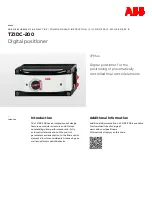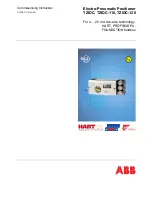
Note
: When increasing or decreasing
the instrument signal, the output pres-
sure should swing up and down. When
changing direction of the false instru-
ment signal, the output pressure should
immediately reverse direction. Any
“bump” or initial reaction of the gauge in
the wrong direction indicates friction
(requiring the unit be rebuilt to eliminate
the friction).
8. Place the instrument signal to auto-
matic and open the block valves or
return the left handle of the MCV to
automatic.
HPP-5 Positioner
Bias Adjustment
Bias Adjustment
For Standard (Non-split range) Sys-
tems:
1. To
increase
the bias setting, in-
crease tension on the
range spring
.
This is accomplished by either rais-
ing the spring retainer or screwing
the bias adjustment stud into the in-
dicator bar or tail rod. Note the two
jam nuts tightened against one an-
other to adjust the length of the
stud. When properly adjusted,
tighten the bias lock nut(s).
2. In order to
decrease
the bias set-
ting, decrease tension on the
range
spring
by either lowering the spring
retainer or screwing the bias adjust-
ment stud out of the indicator bar or
tail rod. Note the two jam nuts tight-
ened against one another to adjust
the length of the stud. When prop-
erly adjusted, tighten the bias lock
nut(s).
For Split Range Systems (see Table 1 )
3. Find the bias
adjustment screw
(1/2-
20 thread with 3/8 flats) on the end
of the positioner opposite the pneu-
matic signal input port. Loosen the
jam nut located on the
adjustment
screw
.
4. To
increase
the bias setting, tighten
the
adjustment screw
.
5. To decrease the bias setting, loosen
the
adjustment screw
.
6. Holding the
adjustment screw
in
place, tighten the jam nut against
the positioner body.
Span Adjustment
Spring Lock
Balanced Beam
Proportional Topworks
Bias Lock Nuts (Qty. 2)
Spring Retainer
Bias Adjustment
HPP-5
9
September 1999































